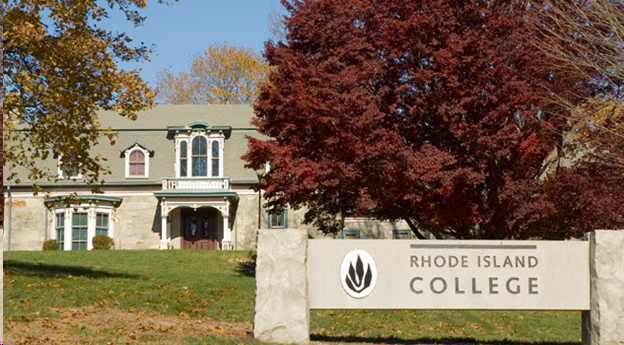Here’s What Trump’s 2020 Budget Proposal Means for Higher Ed - By Terry Nguyen, The Chronicle for Higher Education
President Trump's proposed federal budget for the 2020 fiscal year, unveiled on Monday, includes a $7-billion cut for the Department of Education, a streamlined repayment process for student loans, and the elimination of the Public Service Loan Forgiveness program.
The proposal, for the fiscal year that begins on October 1, is unlikely to be enacted in a divided Congress. But, as is the case every year, the wish list does signal the White House's priorities, including those for higher education.
This year's proposal is yet another effort by the administration to streamline the student-loan system, which could bring down costs for taxpayers and students, said Robert Kelchen, an assistant professor of higher education at Seton Hall University. But the department and the president, he said, "have little ability to change the terms of federal student loans," a process that must involve Congress.

Crowdfunding guide helps districts develop safe, effective practices – By Amelia Harper, Education Dive
Chiefs for Change has released a new guide to help schools and districts use crowdfunding effectively, safely, and equitably, and to develop policies concerning approval, collections, ownership and tracking of results.
EdSurge, the organization that developed the guide, consulted more than 40 educational and crowdfunding experts in the process and determined that education leaders' major concerns include whether crowdfunding may violate district policies or state laws, that it causes confusion regarding the ownership of resources obtained through crowdfunding, creates legal issues, raises equity concerns and fails to align with school district priorities.
The guide seeks to answer these questions as well as provide guidance about how crowdfunding best works in education, how to create policies that provide transparency and accountability, and how to choose crowdfunding platforms that best align with school district priorities and needs.
Though funding for schools is slowly recovering from the recession, this funding rarely reaches the classroom in a way that teachers can use to implement special projects or gain needed supplies. In some cases, teachers want to gain access to technology or resources they feel will improve the learning experience and create more hands-on opportunities for students. Some teachers want to raise funds for field trips or other experiences they feel will broaden their students' knowledge. Other teachers are simply trying to help meet basic student needs for school supplies or clothing.

R.I. governor pitches expanded free tuition plan to House panel – By Linda Borg, The Providence Journal
Gov. Gina Raimondo took her plan to expand free college tuition to the House Finance Committee Tuesday after students held a rally in the State House to show their support for bringing the program to Rhode Island College.
Calling it her top priority, Raimondo extolled the success of the existing scholarship program at the Community College of Rhode Island, which offers two years of free tuition to fulltime students who enroll right after high school. For a “modest” investment of $6 million, Raimondo said, Rhode Island Promise has increased enrollment of Promise students by 113 percent, increased the numbers of low-income students by 143 percent and quadrupled the number of students graduating in two years.
“No other city or state has seen such successful results,” she said. “For a few million dollars, you are seeing a remarkable return.”
In this year’s budget, Raimondo hopes to expand the program to include older students at CCRI. She also wants to expand the scholarships to Rhode Island College, which was part of her original proposal two years ago but was knocked down by the General Assembly, which was concerned about cost.
The RIC proposal would pay for the last two years of college provided students earned a 2.5 GPA and attended full-time, the same requirements that apply to CCRI students.

Despite high costs, new poll shows most young adults think a four-year degree is worth it – By Delece Smith-Barrow, The Hechinger Report
The Hechinger Report conducted a survey in collaboration with the APM Research Lab and APM Reports’ Educate team. To view the full results of the survey, visit APM Research Lab.
With the cost of college steadily rising, and student debt continuing to overwhelm millions of borrowers, it would make sense if young adults questioned the value of a bachelor’s degree. But more than half of them still believe it’s worth the price tag.
Bottom of Form
Among 18- to 34-year-olds, 59 percent believe four-year schools are worth the cost, according to a new survey from American Public Media’s APM Research Lab and The Hechinger Report. While that’s about the same percentage for those of middle age who answered the same question (60 percent of adults ranging from ages 35 to 54), it’s noteworthy that so many millennials and Generation Z adults share this belief. They are the ones most burdened by student loans.
“Cost is all about what you truly think the value of it is,” said Anthony Bernazani, a 34-year old graduate of a community college and a four-year school, George Mason University, both in Virginia. Bernazani, a defense contractor, believes that because of the job opportunities, salary and intellectual gains that can come with a degree, “the value that you get out of it is worth the cost.”
More than half of college students under age 30 took on debt to pay for their education, according to the Federal Reserve. The Employee Benefit Research Institute estimates that 45 percent of families whose head of household is below age 35 have student debt, but that percentage drops to 34 percent for those ages 35 to 44 and even lower for those 45 and older.












